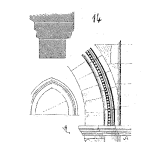
Abraham Lincoln taught the value of adequate preparation when he said, “Give me six hours to chop down a tree and I will spend the first four sharpening the axe.” By nature and training, quality inspectors are focused on verifying the correctness of a product. A traditional inspector at the Lincoln Timber Company might have dutifully marked in her audit log the date and time, the type and size of tree, followed by the comment, “Cut down.”
But Honest Abe would have advised her to take a closer look at the tools and process used to complete the job.
While American manufacturing is straining between the increasing forces of narrower product tolerances and lower product cost, the bulk of quality professionals’ efforts are still focused solely on product compliance. By shifting some of their effort “upstream” to the manufacturing process, inspectors and technicians will continue to verify product compliance, but at a more competitive cost.
According to quality management pioneer, Kaoru Ishakawa, every manufacturing defect can be traced back to one of four causes known as the “4 M’s”: Man, Methods, Machine and Materials. This list was later expanded to include Measurement and Mother Nature (or the environment). By developing and implementing process inspection plans with key attributes from each of these six areas, a production team can verify that the “axe is sharp” before they start chopping.
Developing a Process Quality Plan
The foundation of an effective process inspection plan is a thorough investigation by the appropriate operators, engineers and inspectors. The right team can brainstorm a process, and develop a comprehensive list of process attributes and variables. Using the 80-20 rule, this list can be narrowed to a handful of critical characteristics that “make or break” an acceptable process. Through some planning and trial, the team can transform the critical process characteristics into a working process inspection plan, complete with acceptable ranges, sampling frequency and a reaction plan.
By answering questions similar to those listed below for a particular manufacturing process, a development team can start assembling an effective process inspection plan.
Man – What are the specific training requirements for the process? Is additional supervision/inspection in place for the people who do not yet have that training?
Methods – What work instructions and documents are required for the process? To what revision are those documents? What are the targets and ranges for the key process parameters such as heat, time, pressure, vacuum, etc.?
Machine – What equipment is designated to run the job? Has that equipment received the appropriate preventive maintenance?
Materials – What are the correct raw materials? Did the material pass all receiving inspection criteria? What product packaging is required?
Measurement – Are the gages within their correct calibration period? Are all gages and instruments in good repair? Are visual product standards in place?
Mother Nature – Are the ambient conditions appropriate for processing this material?
By verifying the correct process, a manufacturing team has a far better chance of delivering a quality product at the right cost, and making Mr. Lincoln proud.
To rachet up your manufacturing skill set at an affordable price, check out the variety of quality, manufacturing and business-finance related online courses Ray Harkins teaches on Udemy.com:
Root Cause Analysis and the 8D Corrective Action Process, https://www.udemy.com/course/root-cause-analysis-and-the-8d-corrective-action-process/?couponCode=C82908EB56ADCC11118A
Process Capability Analysis, https://www.udemy.com/course/process-capability-analysis/?couponCode=ACCENDO_1899D
Return on Investment Analysis for Manufacturing, https://www.udemy.com/course/return-on-investment-roi-analysis/?couponCode=ACCENDO_ROI
Leave a Reply